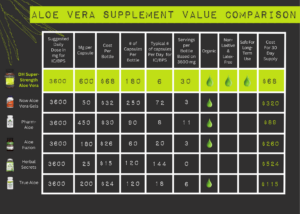Understanding the intricate relationship between plants and beneficial bacteria offers valuable insights into promoting a thriving garden ecosystem. Beneficial bacteria, known as plant probiotics, play a pivotal role in enhancing plant health, boosting nutrient availability, and fostering resilience against diseases. By delving into the different types of beneficial bacteria, their mechanisms of action, and practical applications, gardeners can cultivate a verdant and robust environment.
Central to the narrative of beneficial bacteria and plants is the rhizosphere, the zone surrounding plant roots that teems with microbial life. Herein lies a dynamic interplay where beneficial bacteria are indispensable partners, facilitating numerous biological processes that enhance plant vitality.
Understanding the diverse categories of beneficial bacteria and their specific contributions is essential for gardeners eager to harness their advantages. The following are several prominent genera known for their beneficial impact on plants.
**Actinobacteria: The Soil’s Natural Antibiotics**
Actinobacteria, particularly those from the genus Streptomyces, are noteworthy for their ability to produce a plethora of bioactive compounds. These compounds exhibit antifungal and antibacterial properties, allowing plants to establish stronger defenses against pathogens. Streptomyces species improve soil structure as well, breaking down organic matter into humus and releasing nutrients that plants can absorb.
Additionally, Actinobacteria contribute to nitrogen fixation, a crucial process that converts atmospheric nitrogen into forms usable by plants. This vital nutrient transformation not only enhances soil fertility but also supports overall plant growth and health.
**Rhizobia: Partners in Nitrogen Fixation**
Another significant group includes Rhizobia, symbiotic bacteria renowned for their role in nodulating leguminous plants. These bacteria inhabit root nodules, establishing a symbiotic relationship that provides plants with a continuous supply of nitrogen. In return, the plants supply carbohydrates and a protective environment for the bacteria.
This symbiosis is particularly beneficial for organic gardeners, as it reduces the need for synthetic fertilizers and fosters sustainable practices. The enhanced nitrogen availability facilitates robust growth in legumes and even neighboring plants, cultivating a more fertile garden.
**Mycorrhizal Fungi and Bacterial Synergy**
The interaction between beneficial bacteria and mycorrhizal fungi represents a fascinating facet of soil health. Mycorrhizal fungi engage in mutualistic relationships with many plant species, extending their hyphal networks throughout the soil. These hyphae increase nutrient uptake, particularly phosphorus, while beneficial bacteria assist in enhancing the overall microbial diversity within the mycelial networks.
This synergy leads to improved plant growth, heightened resistance to drought stress, and enhanced overall soil structure. Furthermore, the presence of diverse microorganisms can lead to a flourishing ecosystem that benefits all reactive components in the soil, including both flora and fauna.
**The Role of Beneficial Bacteria in Soil Fertility**
Soil fertility is a critical aspect of successful gardening. Beneficial bacteria play an instrumental role in the biogeochemical cycles that create a healthy soil environment. By decomposing organic matter, bacteria release essential nutrients like nitrogen, phosphorus, and potassium. These nutrients become bioavailable, supporting robust plant growth.
Moreover, the activities of beneficial bacteria can lead to the formation of soil aggregates, which improve soil aeration and water retention. This aggregation also encourages the formation of a stable microbial community, thereby fostering greater resilience against soil-borne diseases.
**Enhancing Plant Health and Resilience**
Beyond nourishment, beneficial bacteria bolster plant resilience against diseases and abiotic stressors. For instance, certain strains have been found to induce systemic resistance, preparing plants to better withstand pathogens. This phenomenon occurs as beneficial bacteria trigger biochemical pathways that enhance the plant’s immune response.
Additionally, the human-induced stresses of urban gardening can be mitigated through the use of beneficial bacteria. Their presence in the soil can enhance drought resistance and improve nutrient uptake, crucial in environments where water availability fluctuates significantly.
**Practical Applications for Home Gardeners**
For gardeners looking to enhance their soil with beneficial bacteria, several practical approaches exist. Introducing organic compost filled with naturally occurring microbial life promotes bacterial growth. Inoculating your soil with commercially available beneficial bacteria products can also yield substantial benefits.
Practicing regenerative agricultural techniques, such as crop rotation and soil cover, can create an ideal environment for beneficial bacteria to thrive. Incorporating diverse plant species also aids in supporting a robust microbiome, enhancing the overall resilience and vigor of the garden.
**Conclusion: Cultivating a Microbial Powerhouse**
Overall, the integration of beneficial bacteria into gardening practices not only leads to healthier plants but also contributes to the broader ecological balance. By fostering these tiny allies, gardeners can cultivate a rich, resilient, and productive garden ecosystem. The influence of beneficial bacteria extends beyond mere nutrient enhancement, embodying a holistic approach to sustainable gardening. Embracing this microbial partnership is key to thriving gardens now and into the future.





Leave a Comment